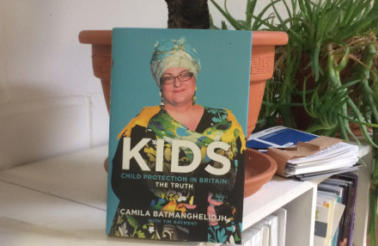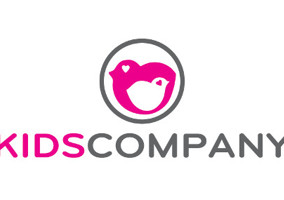Kirsty Weakley says that while the book might be an illuminating read, there are still too many unanswered questions.
Camila Batmanghelidjh ends her book, Kids – Child protection in Britain: The Truth, with the line “je ne regrette rien” (I regret nothing).
This sums up the overall theme of the book, which is to absolve the author of any blame for the collapse of the charity that she founded and ran for two decades, by challenging the accounts of journalists, civil servants and politicians and to promote the narrative that the charity was brought down by external forces (government and media) rather than by its own financial mismanagement.
It offers a fascinating insight into the origins of the charity, the motivations of its founder and the challenges of delivering services to vulnerable young people (see the section on beneficiaries stealing the bike that belonged to a visitor from Comic Relief), and also to the devastation experienced by those at the centre of the charity when it folded.
There is also an attempt to explain some of the things that the charity was most criticised for, such as paying for designer clothes.
But there is no apology
But there is little in the way of an apology for her role in the charity’s failure and many questions have been left unanswered. And Batmanghelidjh has failed to accept any responsibility for her role in the devastation that followed the collapse.
Like Batmanghelidjh’s public appearances shortly after the charity collapsed, the book feels frantic and hyperbolic, using phrases and language that can be jargonistic and client case studies which can be hard to follow.
The book is littered with the names of celebrity supporters, and she speaks often of generous philanthropists, but Batmanghelidjh has come to some interesting conclusions about types of philanthropists. There is a whole chapter dedicated to ‘narcissistic philanthropy’ in which she complains about the need to pander to some donors, who she clearly lacks respect for.
She also shows just how out of touch she was with the rest of the charity sector by saying that she was “terrified” by visits from charitable trusts wishing to find out how their money is spent.
There are also sections of the book which don’t seem to quite tally with my experience of covering the events surrounding the collapse of the charity.
In today’s book she repeatedly claims that it was the 'See the Child' campaign, which Kids Company launched in 2014, that turned the Cabinet Office against the charity.
But having launched with great fanfare in 2014 it had achieved very little by July 2015, when Civil Society News asked for an update. A promised taskforce failed to materialise and campaigning appeared to have stalled, with no money secured to do any of the work.
Wider impact
There is also no mention of the wider implications for the voluntary sector. In the months and years that followed, Kids Company has, sometimes unfairly, become shorthand for governance failings in the wider voluntary sector.
Overall it is hard to trust her as a narrator. It is easy to sympathise – she is clearly passionate – but she ultimately comes across as rather blinkered, with little understanding of the lasting damage that has been done.
While she expresses sorrow for the situation (and rather bizarrely the distress the events must have caused her brothers), she refuses to apologise.
I, among others, have written many times that there are unanswered questions about how the charity collapsed in such spectacular fashion. These have not gone away.
Unfortunatelty today’s book does little to change my mind about the root cause of its collapse: that the charity grew too quickly, did not put in place adequate controls and failed to build reserves that would have enabled it to manage the situation it found itself in two years ago.
Related articles










